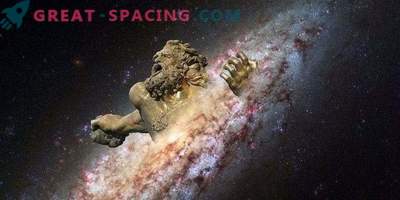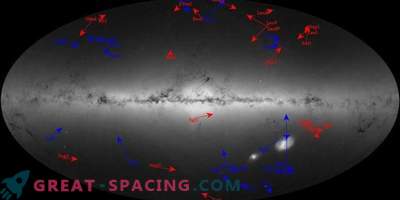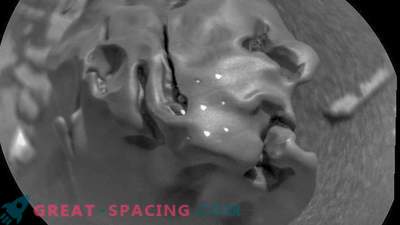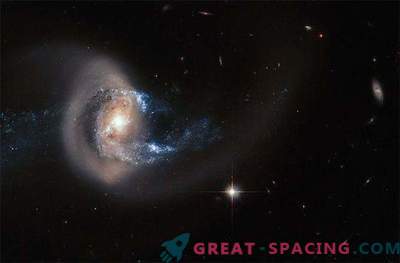
Last week we published the long-awaited second batch of information from the ESA Gaia mission, which provided information on 1.7 billion stars. This is the richest catalog for today.
To simply list such a huge amount, you need to count one per second. All this would take 30 years, so the work of astronomers will increase. The data set has already revealed interesting details about the composition of the stellar population of the Milky Way and how the stars move.
In addition, there is valuable information regarding the territory outside the galaxy. For example, carefully consider the image above. It displays one of the galaxies closest to us - the Large Magellanic Cloud. The picture combines the total stellar density, filling each pixel, as well as data on the correct movement of the stars, which are shown in the form of a texture. By measuring the correct motion of several million stars, scientists were able to see a real “imprint”, rotating clockwise around the galactic center.
Astronomers are interested in getting the orbits of globular clusters - ancient star systems connected by gravity and found in the halo of the Milky Way, as well as rotating near dwarf galaxies. This will help to better understand the past of the galaxy and the details of its evolutionary path.











































